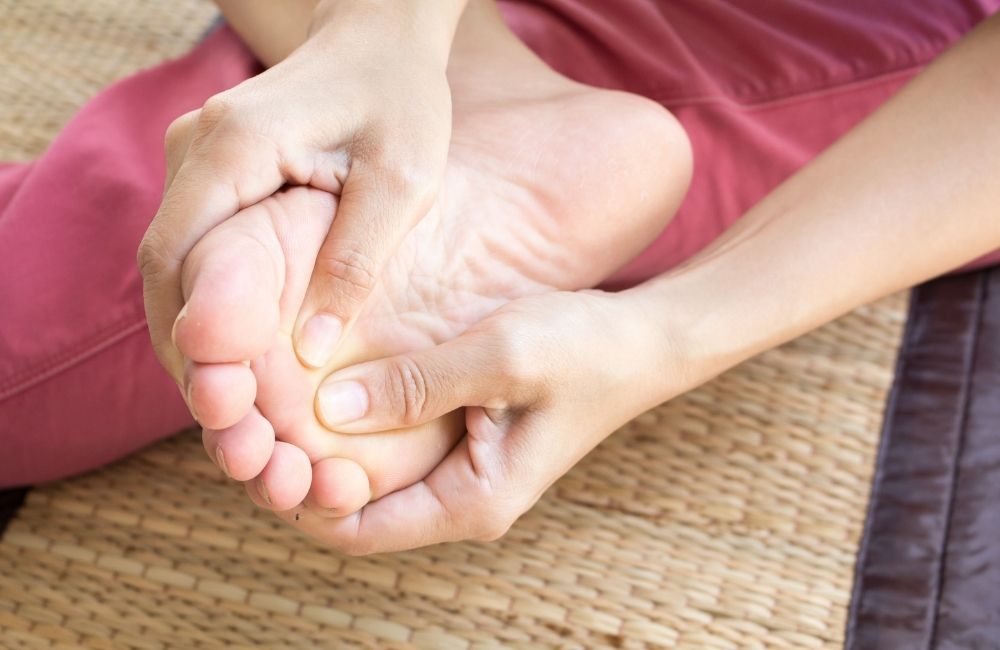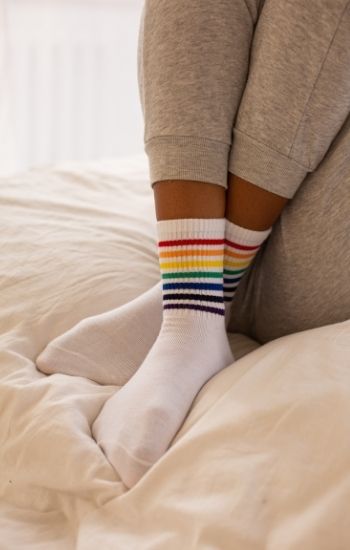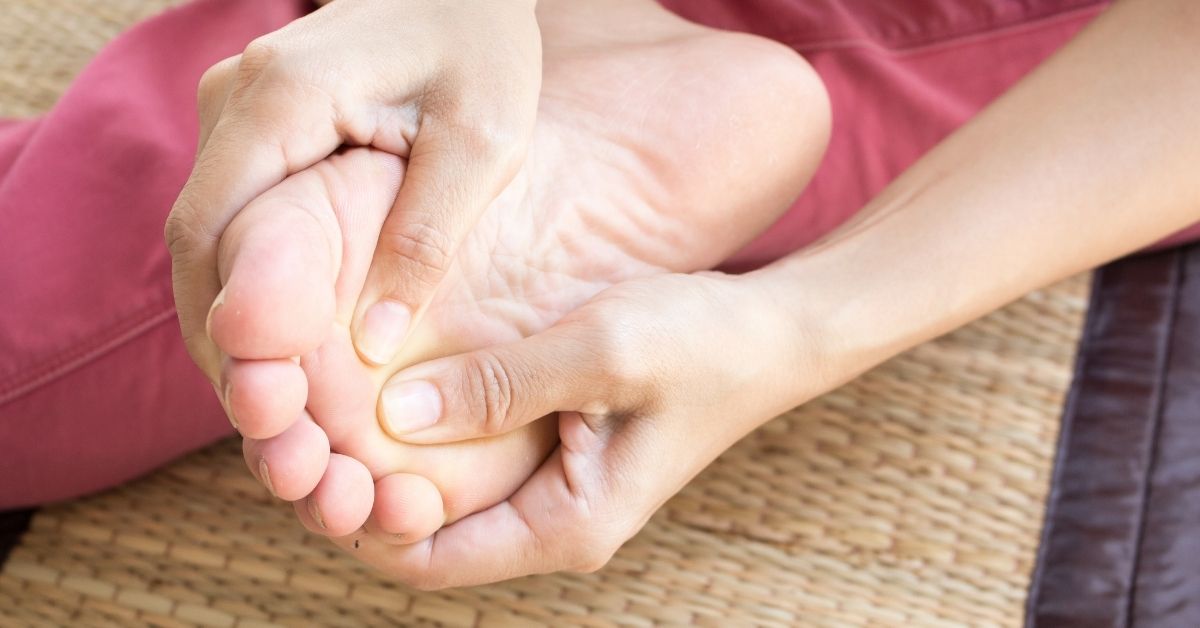Diabetic foot health is vitally important (find out why). Apart from seeing your Podiatrist regularly for continuing care, there are a few things you can do to care for your feet with diabetes and make sure they stay happy and healthy.

Check your feet
Check the bottom of your feet and in between your toes daily to ensure there are no cuts, discolouration of the skin (redness, purple/blue tinges, black), swelling, foreign objects embedded in the skin, a lot of loose flaking skin or blisters.
Deal with any issues
Treat and dress broken skin to reduce the risk of infection. If nothing has changed in a week or it appears to be getting worse, book in to see either your GP or Podiatrist for further assessment/ treatment.
Wash and dry your toes
Especially in between them. This prevents fungal infection and skin tears which can bleed and become infected. Be gentle, as this skin is a lot thinner and more sensitive than the underneath side of your feet.

Change your socks daily
Sometimes twice daily! If you intend on exercising make sure you change into new socks that you haven’t worn that day. Make sure that your socks are not too tight, particularly around the leg/above the ankle to prevent restriction in blood flow. You can get Diabetic socks that have looser elasticity around the ankle that prevents this from happening. Also make sure to avoid socks that are too loose fitting as that can create friction and result in blisters forming.
Wear shoes to care for your feet with diabetes
Always. Never walk around barefoot. Before putting shoes on, shake them out and check the liners and inside the shoe for tears or foreign objects as these can cause damage to your feet.
Be careful when buying new shoes
When buying new shoes you want to make sure they are wide enough and deep enough especially around the toe area to accommodate for any toe deformities. Measure for shoes to the longest toe (that may not always be the big toe). Never rely on the fact that you have always been the same size, our feet change as we get older and therefore it is important to check your foot size every time you get new shoes.
Never buy shoes online as you will not get the opportunity to try them on to make sure they fit properly. Even if you have purchased the same model and brand (particularly runners) there may be slight discrepancies during the manufacturing period of the shoes and therefore they may not fit right.
Do not buy shoes that taper in the front and avoid anything higher than a 3 cm heel. Shoes with a heel increase pressure on the ball of your foot and can lead to stretching and damage to the ligaments under your toes. It can also lead to wearing away of the protective padding under the ball of your foot, permanent shortening of the Achilles tendon, bunions and osteoarthritis in joints of the feet with long term wearing.
Toe abnormalities
Hammer and mallet toes in particular can result in increased pressure along the tops of the toes where there is not any padding. This can lead to calluses and corns developing and can be quite painful. If you are someone who has no sensation in their feet this can lead to ulcers and is an area that is very close to the bone. This means that an infection in the bone can likely develop if the ulcer is left untreated. Regular podiatry appointments can help keep the callus and pressure down to prevent ulcers from developing. Your Podiatrist can also make and give you various devices which will remove the pressure from the tops of the toes.
Our Podiatrists will provide you with a comprehensive and easy to follow information sheet with all the information you need to know.


